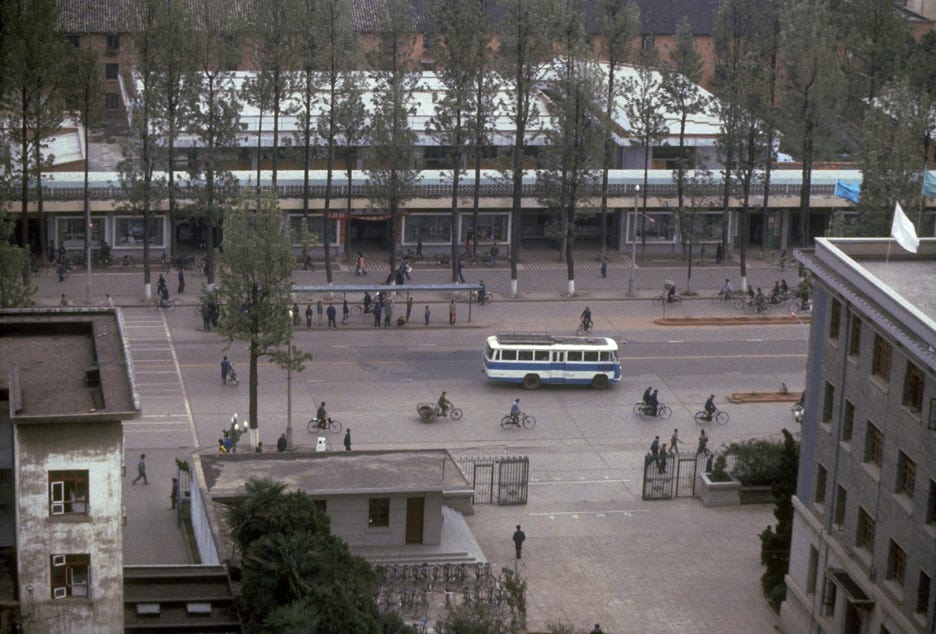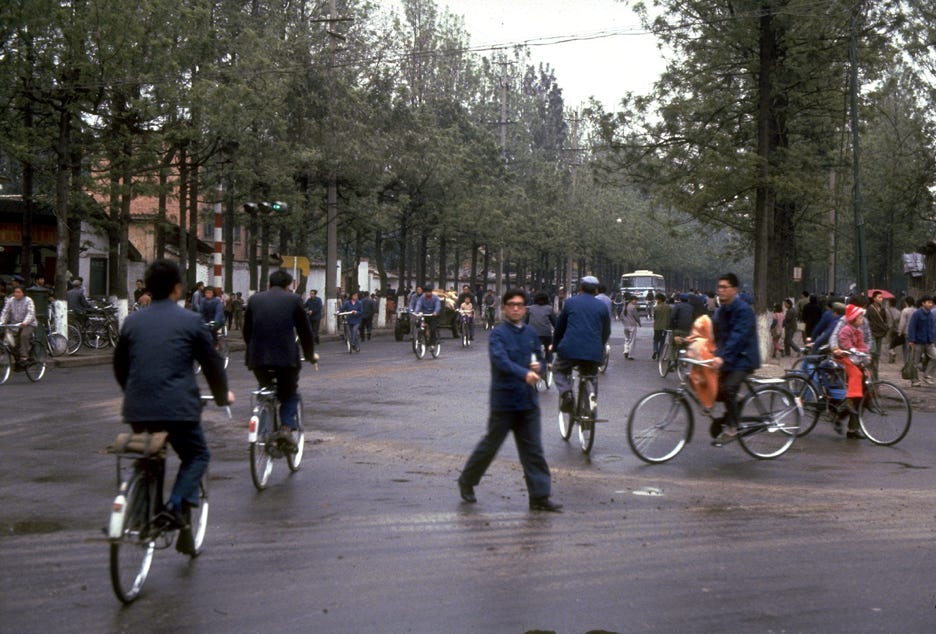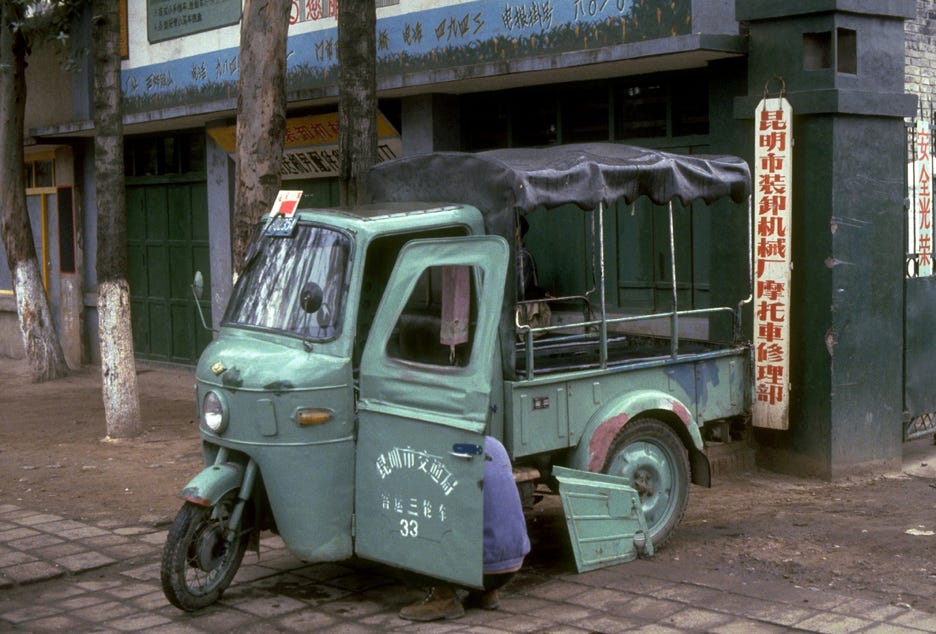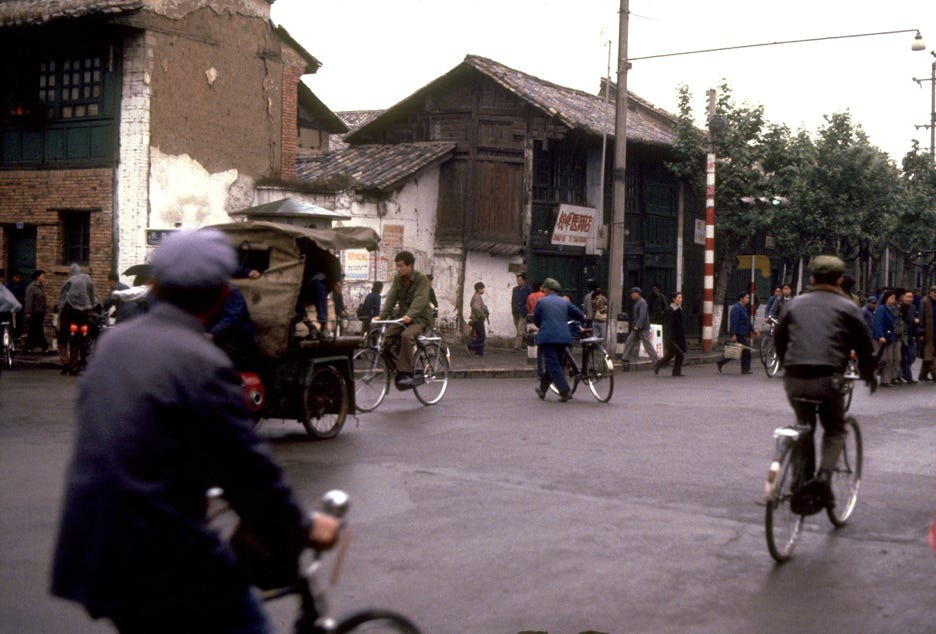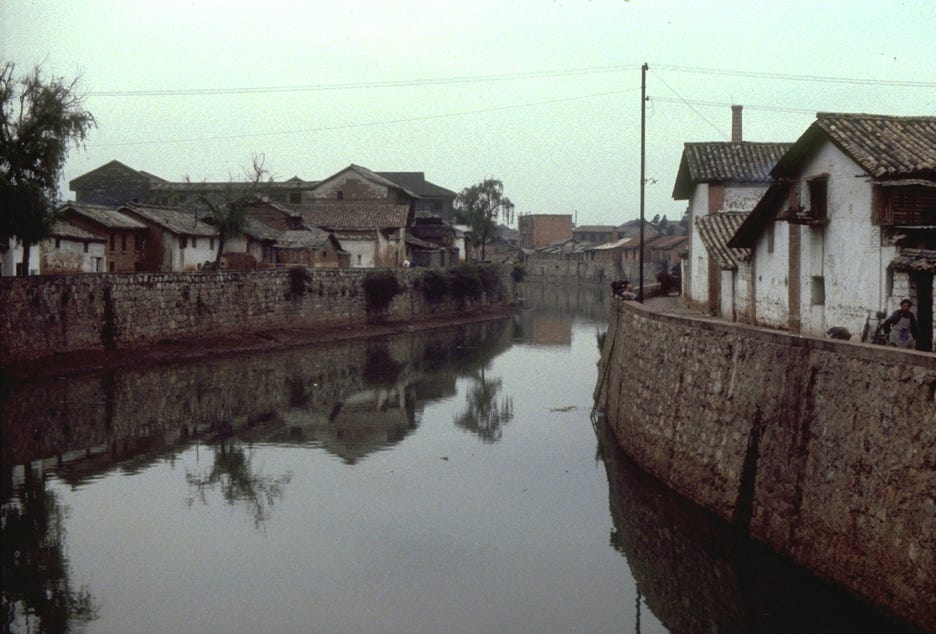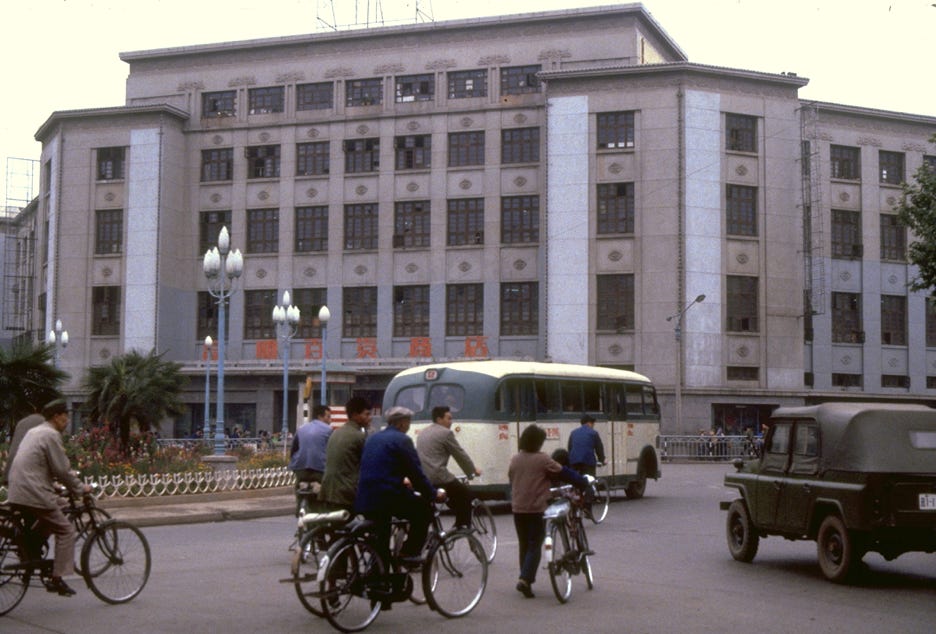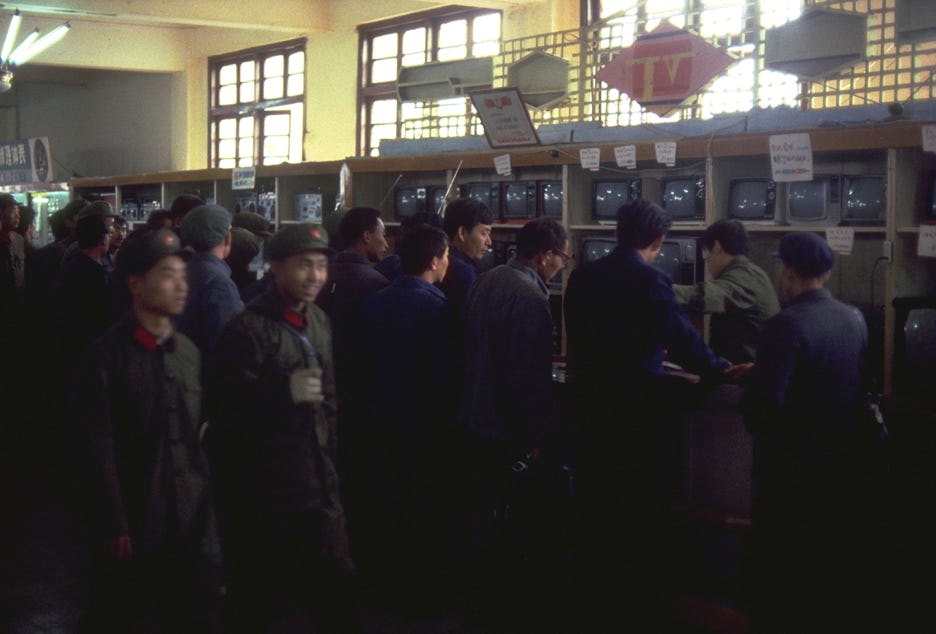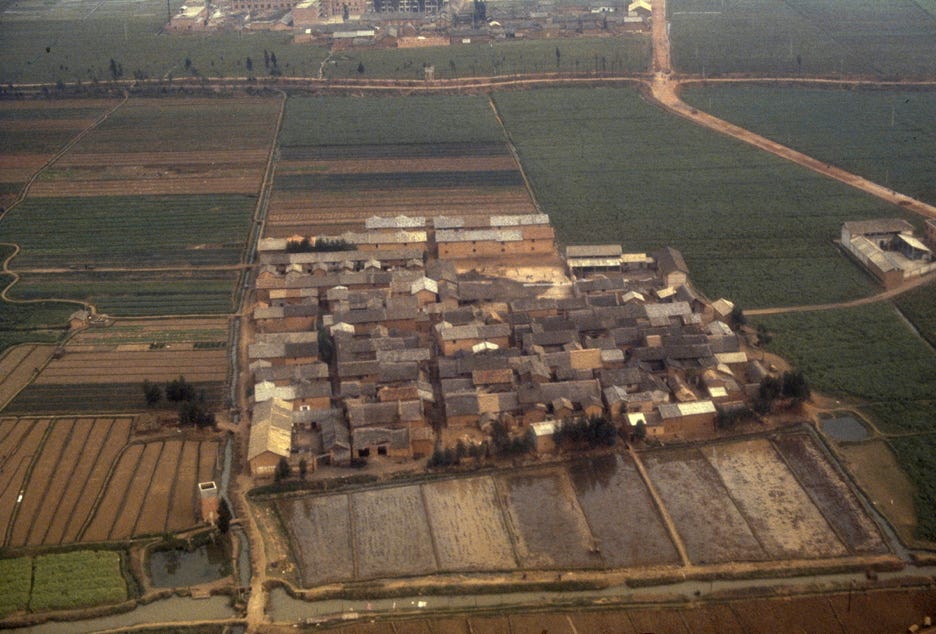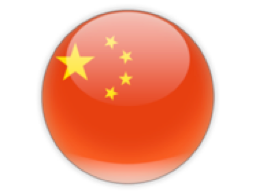

This morning we went to West Hill, which is about 20 kilometres west of Kunming. It is a popular scenic area for Chinese people – China contrasts strongly with Thailand and Burma in that most of the tourists at scenic spots are local people on holiday or on their day off rather than foreign tourists). Unfortunately, the air in Kunming was hazy this morning, so the view was not everything it was supposed to have been.
We passed through Kunming’s industrial zone and then through the rice fields and up a steep hill. At the end of the drive, we climbed 323 steps to Dragon Gate. The path, which is cut into the side of a sheer limestone cliff, gave a great view of the 300 square kilometre Lake Dianchi (or part thereof).
On the way down the mountain again, we called in to the Huating temple, which still functions as a Buddhist temple. The contrast between this Chinese Buddhist temple and Buddhist temples in Thailand and Burma is quite striking. Here we did not need to remove our shoes, and most of the visitors were Chinese sightseers rather than worshippers. The grounds were immaculately landscaped, and we saw a group of about 30 people doing their tai-chi exercises. I had seen some other people doing tai-chi in Kunming, but this was a considerably larger group.
We returned to Kunming to learn that our plane to Chungking was going to be delayed due to fog in Sian, which is where our plane was originating. So after lunch, we paid a visit to the Kunming Department Store, which contains a Friendship Store (i.e. shop for foreigners) on the 3rd floor. The prices for all goods are incredibly cheap in China – except at Friendship Stores. So armed with my phrasebook (which I’ve already been using extensively since arriving in China), I went for a walk through the department store.
The department store itself was very much like the Bega Co-operative Department Store inside before the latter’s renovations. The shelves seemed well stocked, and it’s interesting to see that televisions, Rubik’s cubes and video games seem to be popular in Kunming. Having explored the department store, I wandered along the street (as I’m now in the habit of doing), and as well as taking photographs, called in to a books and posters store where I bought three representative posters for 25 cents each. The phrase book has more than paid for itself.
Upon returning to the hotel, we were informed that our plane was further delayed, which gave me the opportunity to go out for another walk. The reason that Kunming is so quiet is that bicycles are the universal means of transport. In the cool, misty morning riders wear plastic sheeting to keep themselves warm and dry, and it is common to see both men and women riding bicycles with little children behind the handlebars, seemingly on their way to creche.
Clothing is more diverse than I had expected. Blues and greys certainly dominate, but there is a sprinkling of browns, and I even saw one Chinese lady wearing a leopard skin coat. The portraits of Chairman Mao have all been removed, often leaving marks on the plaster where they have come off. I have seen no portraits of any political leaders, past or present, so far during my stay in China.
While waiting to go to the airport, I was talking with Mr wang, who is one of our local Kunming guides. He is 30, his wife is 29, and they had their first baby last month. We are his first tour group; he was a teacher until five years ago, but found the children to be too rebellious during the Cultural Revolution, so left teaching to start working in an office. He receives a salary of 250 yuan per month. He commented that the massive soil erosion we saw yesterday was the result of peasants rebelling against authority and chopping down trees for fuel and firewood during the Cultural Revolution. He said the reafforestation has all been carried out during the last three to four years.
At long last, we left for the airport, boarded a CAAC Soviet-made Antonov An-24 prop airliner (the Soviet equivalent of the Fokker Friendship), and took off to Chungking. It was very foggy coming into Chungking Airport, as it apparently often is in the Szechuan Basin where the city is situated.
Nonetheless, I could see immediately that the landscape was very different from Kunming. The mountains near Chungking are much steeper, and they were covered with rice terraces in a way that made even the Kunming farmers appear wasteful with their land. Rather than the bright orange/red terra rosa limestone-based soils around Kunming, the soils here look much richer.
Chungking was first settled about 3,000 years ago. It was the wartime capital of China during World War II when the Japanese were occupying Nanking (the capital before the invasion) because of its remoteness. The scenery on the 20 kilometre drive from the airport to the city was spectacularly breathtaking. Perhaps it was fortunate that there was a thick fog, or the rice terraces, cliffs and steep mountains might have consumed an entire film.
The hotel where we are staying, the Yizhou Hotel, is a little out of the city. It occupies many hectares, being in the form of separate residences. Apparently built as accommodation for visiting VIPs and government officials, all of our group is accommodated in one house, but the hotel is so big we have to catch a bus for our meals. Dinner tonight was another banquet, this time comprising Szechuan food. Now I understand the meaning of HOT and spicy!
After dinner we were taken out to visit a painting school where we were given the opportunity to buy original paintings in the traditional style. About 2,000 yuan ($Aust.1,000) changed hands from our group (850 yuan for one painting) during the 30 minute visit. Several of the people in our group seem remarkably free with their cash (although to be fair they are definitely not young marrieds like I am). The pity of this is that the guides are coming to see some people in our group as easy targets, which means they think the group as a whole might prefer to visit shops rather than geographical destinations on this geographical study tour. Some people in the group were thrilled to hear that we are going to one of the new “free markets” tomorrow (i.e. not government controlled) until they were told it would be to look, not buy. “What’s the point of that?” protested several of my fellow travellers.
Chungking has six million people, but I am yet to see them. It’s a pity the hotel is so far out of town, as I can’t just go for a walk and see the city. Indeed, the walk to the perimeter gate is too far!

